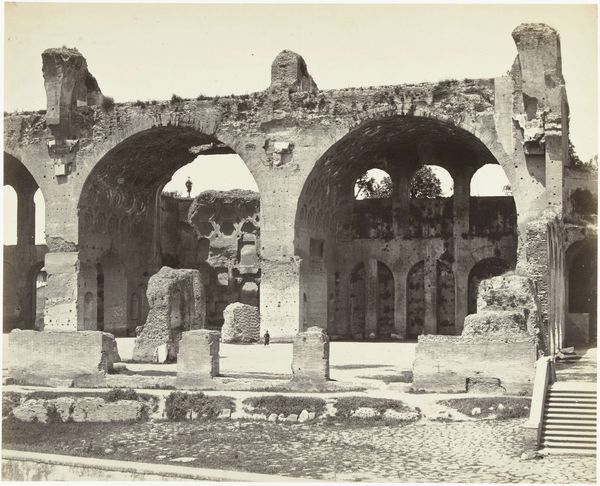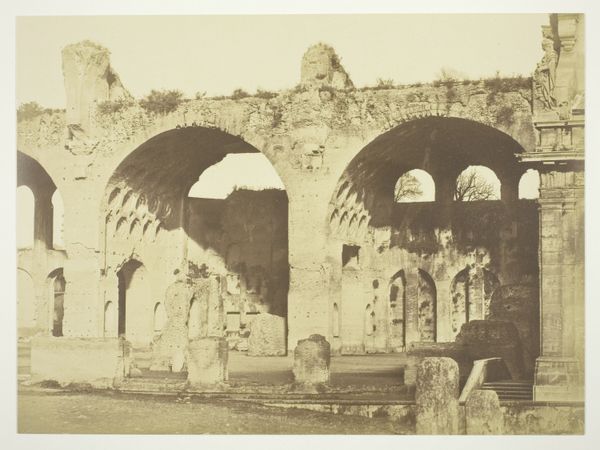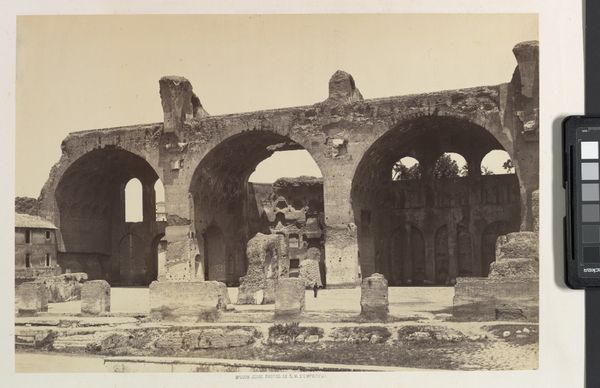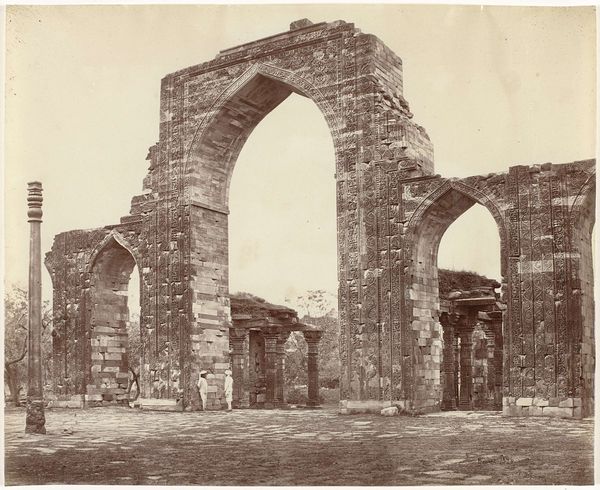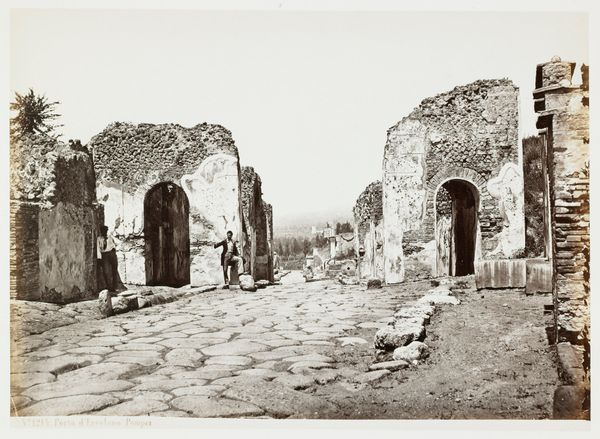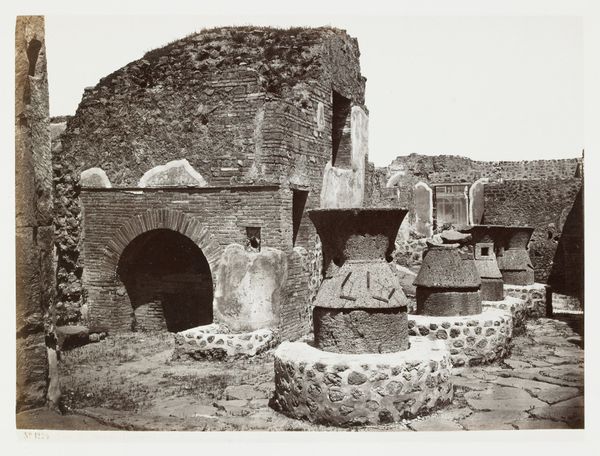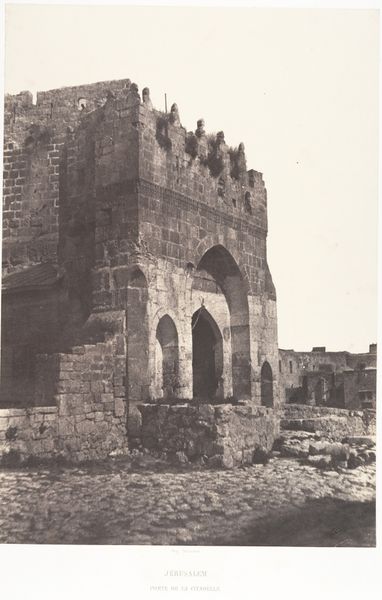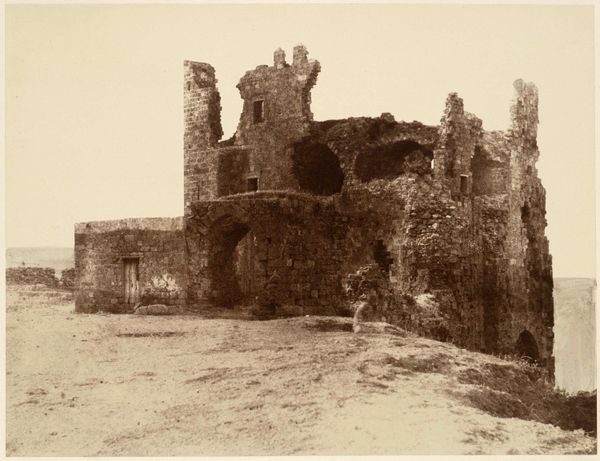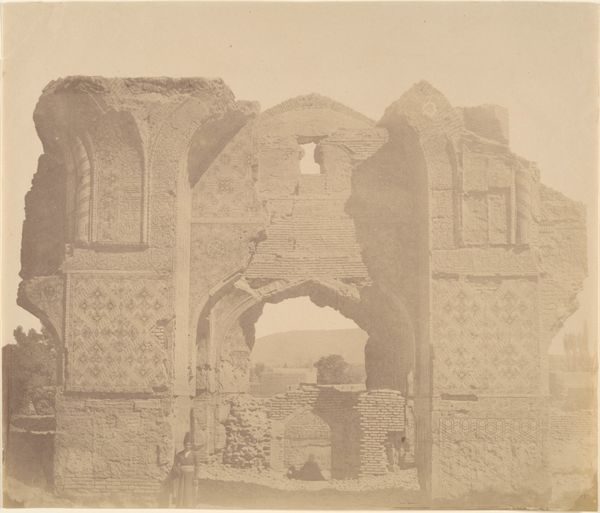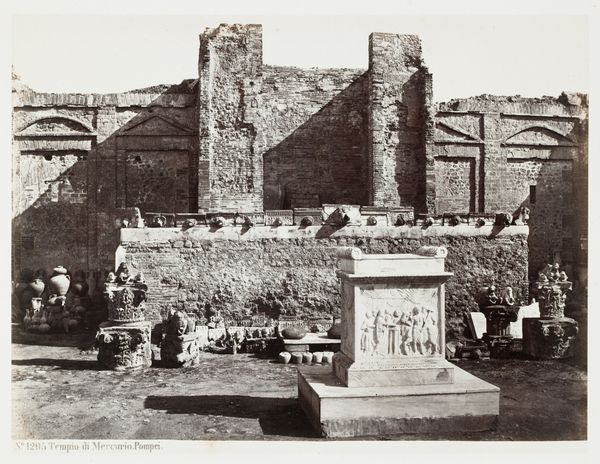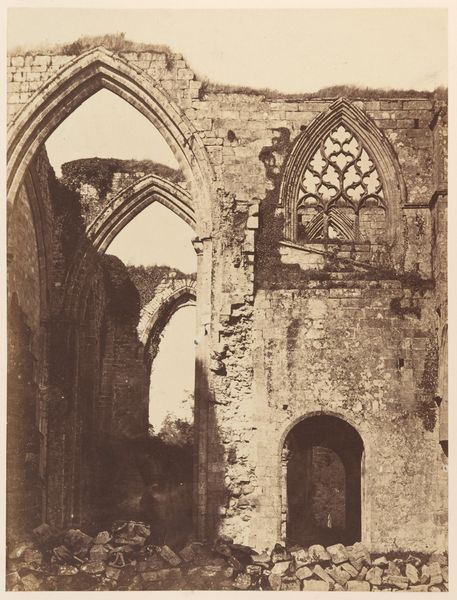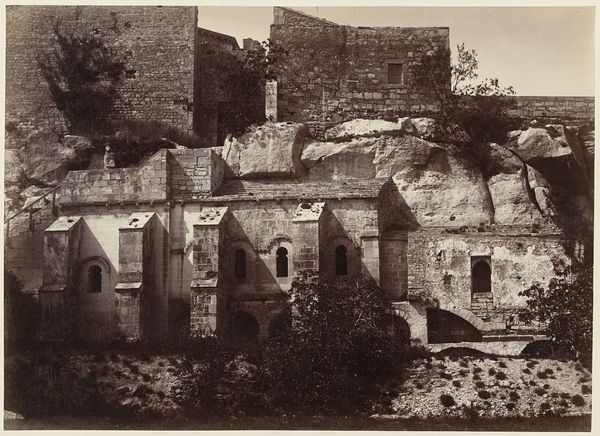
print, photography, gelatin-silver-print, architecture
# print
#
landscape
#
photography
#
romanesque
#
historical photography
#
arch
#
gelatin-silver-print
#
19th century
#
architecture
Dimensions: Image: 8 11/16 × 11 5/16 in. (22 × 28.7 cm) Sheet: 12 1/8 × 18 1/2 in. (30.8 × 47 cm)
Copyright: Public Domain
Curator: Standing before us is Eugène Constant's "Tempio della Pace," a gelatin silver print made between 1848 and 1852. The image captures a section of the Roman Forum. Editor: My initial thought is that the structure, while monumental, seems almost skeletal—as if time and weather have conspired to reveal its fragile core. There is an incredible contrast of shadow and light. Curator: The Roman Forum itself holds immense symbolic weight, serving as the epicenter of civic and religious life in ancient Rome. To see it captured in this nascent stage of photography, almost as an artifact of history, heightens that impact. What visual cues lead you to interpret it as skeletal? Editor: The exposed brickwork, the fragmented arches, the vegetation clinging to the ruins – these all contribute to the sense of decay and reclamation by nature. It whispers of the inevitable transience of human endeavors, which is powerful when considering its status as photography. Curator: Exactly. Constant’s choice to document the Temple of Peace—a site initially intended to represent Roman imperial power—underscores a narrative about power, and also about historical memory and cultural continuity, how our symbols are passed from one generation to the next and modified, reimagined… Editor: Which also underscores the political dimension; photography here transforms into a tool to not just record, but interpret history. How might the social context of its display have shaped public perception of the Roman Empire in Constant's time? What meanings were ascribed to Rome as the former "center of the world" by different audiences? Curator: Those questions are exactly why an artwork such as this matters—it invites the viewer to not only look at, but into history, examining the many, often contradictory, facets of what it means to both create and remember the world. It's quite fitting that the passage of time seems literally etched into the stones that the photographer has managed to capture. Editor: Indeed. A compelling visual document that really captures the cyclical nature of empires and iconography, both created and inevitably transformed or forgotten.
Comments
No comments
Be the first to comment and join the conversation on the ultimate creative platform.
